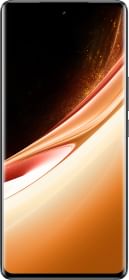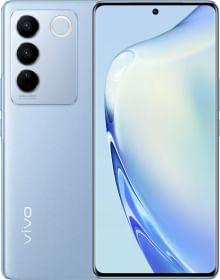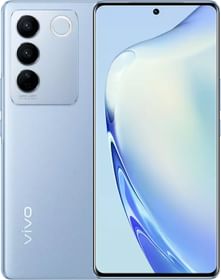When the decision to buy a new phone is taken, there are several factors that are considered. One of the major deciding factors in the buying decision is the amount of storage the phone offers. But what exactly is storage in smartphones? What are the different types of it? And how much of the promised storage do we require and how much of it is actually available for our consumption? Here, we will be getting into the weeds of all these questions about smartphone storage and hopefully, by the end, you’ll know how much and what type of storage do you need in your smartphone.
There are a lot of things to cover here. You must have heard about things like RAM, ROM, and Flash Storage a lot, or at least in passing. So first, let’s understand them and clear any confusion you have about them now.
Types of Memory: RAM vs ROM vs Flash Storage
RAM, ROM, and Flash Storage are basically three types of computer memory and they differ in the way they access, store, and manage the data.
RAM

Random-access memory or RAM is the kind of memory that stores data that is being currently used by the processor. Typically only temporary information is kept in the RAM that your smartphone needs at a certain time to do tasks that need to be done soon. RAM also affects the number of activities you can do at one time. Thus higher the amount of RAM, the system has to juggle fewer processes. And one more thing, RAM is volatile which means all the data is lost once the device is turned off.
ROM
Read-only memory or ROM, on the other hand, is a type of non-volatile memory that allows the data to be safe even in the event of a power failure or system shutdown. However, as evident from its name, the data stored in ROM cannot be electronically modified or writeable. It is read-only. It holds pre-programmed instructions like BIOS (basic input/output system) settings, boot instructions (startup sequence for firing up the operating system), etc.
The ROM usually comes built into the Flash Memory.
Flash Memory
Flash memory is non-volatile computer memory that can be electrically erased and reprogrammed (easily writeable like RAM). And this data doesn’t get deleted when the system is off (non-volatile like ROM). When we speak of storage, this is what we usually refer to as it is user-accessible. It’s used as primary storage memory on various portable devices due to its low cost, compact size, great physical endurance, and low power consumption.
Now like with all technologies, there are types and sub-types in Flash Storage too based on improvements in performance and efficiency.
ALSO READ: 10 Best Online Video Editing Websites or Apps in 2023-2024
ALSO READ: A Guide to Apple’s Dynamic Island: What it is, it’s Advantages, disadvantages & more
How is RAM important on your Smartphone?
The more RAM your smartphone has the quicker you can access and switch between apps without experiencing any lag. Without RAM, apps would close when you switch to another app, causing delays and slowing your phone down. When buying a smartphone, one should try and purchase a phone with at least 4GB RAM on board.
RAM for Gamers
For gaming beginners, 8GB of memory is a good starting point. However, for advanced gamers, at least 16GB of memory will ensure an uninterrupted, speedy, and high-quality gaming experience.
Types of Flash Storage for Smartphones
There are organizations or bodies that come up with certain standards for each new storage format. Although there are many, the most common ones you would come across are eMMC and UFS storage types.
Let’s see what eMMC and UFS mean and draw a comparison between them.
eMMC
The term eMMC is short for Embedded Multi-Media Card and had been one of the most common storage options for many years. In design, it is a package of flash memory, an MMC (multimedia card) interface and a flash memory controller integrated into the same silicon die.
But with advancements in tech, it has been taken over by —
UFS

Universal Flash Storage or UFS also consists of a high-speed serial interface between flash memory and the processor, the flash memory itself, and a controller but the difference lies in the underlying architecture. It not only boasts better performance but also assures efficiency gains.
eMMC vs UFS
Here, the diff between UFS and eMMC can be explained with the analogy of a highway. The newer technology (UFS) has one road for reading data and another for writing data. eMMC relied on a single road for both purposes and hence suffered from congestion or longer queues.
Technically speaking, while eMMC has a half-duplex interface that allows just one action at once, UFS has a full-duplex interface that permits simultaneous actions.
In addition, UFS also has a Command Queue (CQ), which effectively orders all operations and/ or commands to be executed. This means that multiple commands can be executed simultaneously and the order of tasks can be changed and prioritized accordingly in real-time. Since eMMC has no CQ, it must wait for a process to complete before moving on to the next task. Thus, the wait time between the two tasks is longer.
Now that you have an idea about Internal Storage, let’s see how much of it is required, and what are your alternative options in case of its deficiency.
How much storage do you need for your smartphone?

When considering the memory specifications of any phone, it is important to understand the difference between internal and external (or expandable) memory.
Internal storage is the manufacturer-installed storage space within your phone. Here is where the system software like the operating system, pre-installed apps, and user files and apps are present. These days most smartphones come with onboard storage of at least 32GB or 64GB and a few high-end models feature 256GB or 512GB.
The total amount of internal storage cannot be increased or decreased by the user. So if your phone has only 32GB of internal storage and no expansion slot, this is all the storage space you will ever have.
The operating system will take up a small chunk of storage and you’ll need to take into consideration the same for all your apps that you will externally install on your phone.
If you use your phone for sending messages and emails, browsing the internet, and taking the occasional photo then 32GB should be plenty. But if you like taking a lot of photos and videos then you should consider 64GB. Multimedia like videos and photos take up a lot of storage space. If you also like downloading movies to watch on your phone then you’ll need to look at 128GB or 256GB of storage. Another consideration is music. If you use a streaming service then you don’t need to worry about having much space available but if you’re still downloading songs then you’ll have to consider how many you like to have on your phone.
Alternatives to Internal Storage: SD Cards and Cloud
Now, when you fill out the internal storage, you are left with the option of external storage.
External, or expandable memory in the form of a removable SD (Secure Digital) card lets you expand your storage capacities for storing personal files like photos, music, videos, etc. These removable cards consist of a flash memory chip and an SD controller.
But as already mentioned, not all phones will have the facility to add external memory.
So, to make up for the limitations of internal storage and the lack of external expansion of storage capacities, you can opt for cloud storage. Some companies offer even free storage up to a whopping 50GB. So, this is one option worth checking out.
Cloud Storage Options
1. Sync
Sync is one of the best cloud storage options available in India. It secures all your files with zero knowledge encryption, which means nobody except you can access your data. Sync uploads all files to the Sync folder that is automatically synced across your device. It allows you to restore the previous versions of your files and rewind your entire account to any date between the past 180 days. If you have Office 365 integration, you can integrate it with Sync and edit documents from within the cloud itself.
2. iCloud
For Apple users, iCloud is the best Cloud storage option. The privacy policy of iCloud is better than Google Drive or Dropbox and the team is available for support 24×7 if there is any problem.
3. One Drive
OneDrive offers 1TB of cloud storage along with a 1-year subscription to Office 365, so you can work with office apps on 5 devices. One Drive allows editing of documents, word files, presentations, or spreadsheets online. Although download speeds are slow and customer support is underwhelming, but it is still a viable storage option.
4. Dropbox
For collaboration purposes, Dropbox is a feasible option. Dropbox gives you advanced options for syncing your files, including Selective Sync, Smart Sync, and even Block Level Sync. It allows advanced syncing functions contributing to the swift speeds of Dropbox. Dropbox allows smooth video playback and integrates it with other services including Office 365, Google Docs, and GSuite.
5. Google One
Google One is a subscription plan that gives you more storage to use across Google Drive, Gmail, and Google Photos. Google Plus gets you extra benefits and allows you to share your membership with your family. There are 2 Google One Plans available in India. The base plan costs Rs. 6500 a year or Rs. 650 per month with 2TB of cloud storage and the most expensive plan costs Rs. 16,250 a year or Rs. 1625 and offers 5TB of cloud storage with additional benefits similar to the Google One base and standard plan.
ALSO READ: Google One Plans in India: How to buy extra cloud storage for Google Photos
Over time, the demand for storage has grown exponentially as end-users need to save a lot more than photos and videos. To cope with the ever-rising demand for more, smartphone manufacturers have incorporated higher storage capacities and introduced new types of storage to cater to the ever-growing need for storage among their users.
With all the information mentioned above, I hope you are at least a tad bit more familiar with smartphone storage and should be able to make an informed decision in your next purchase.



































